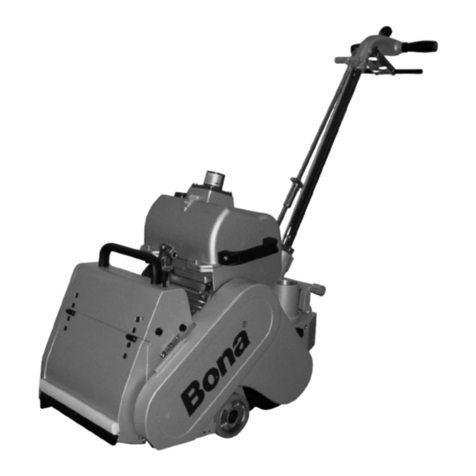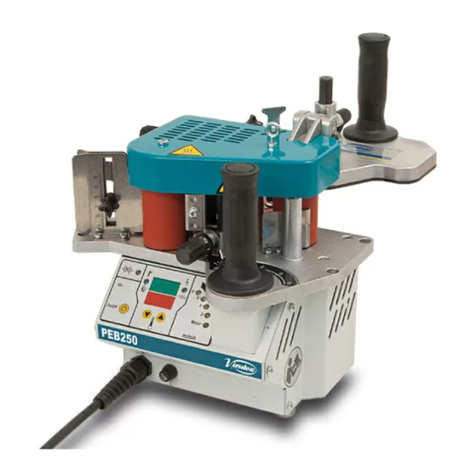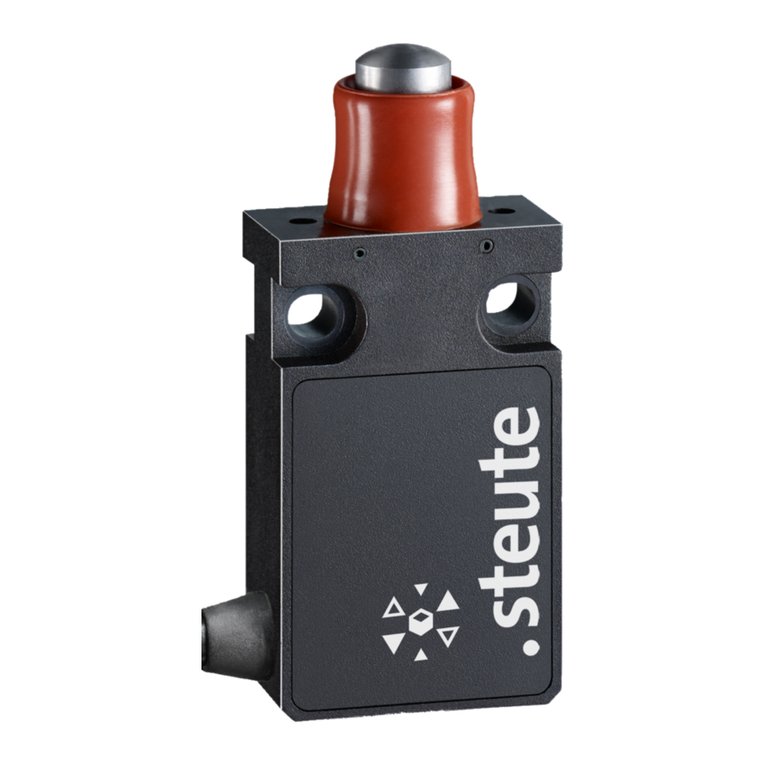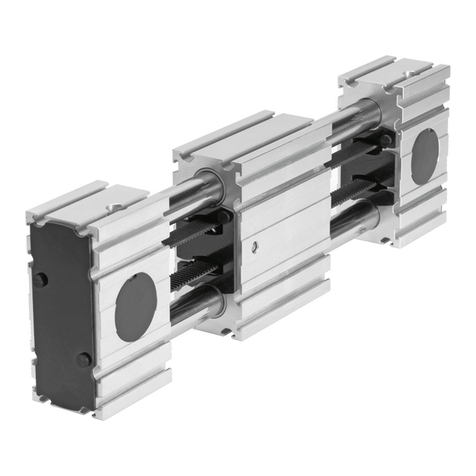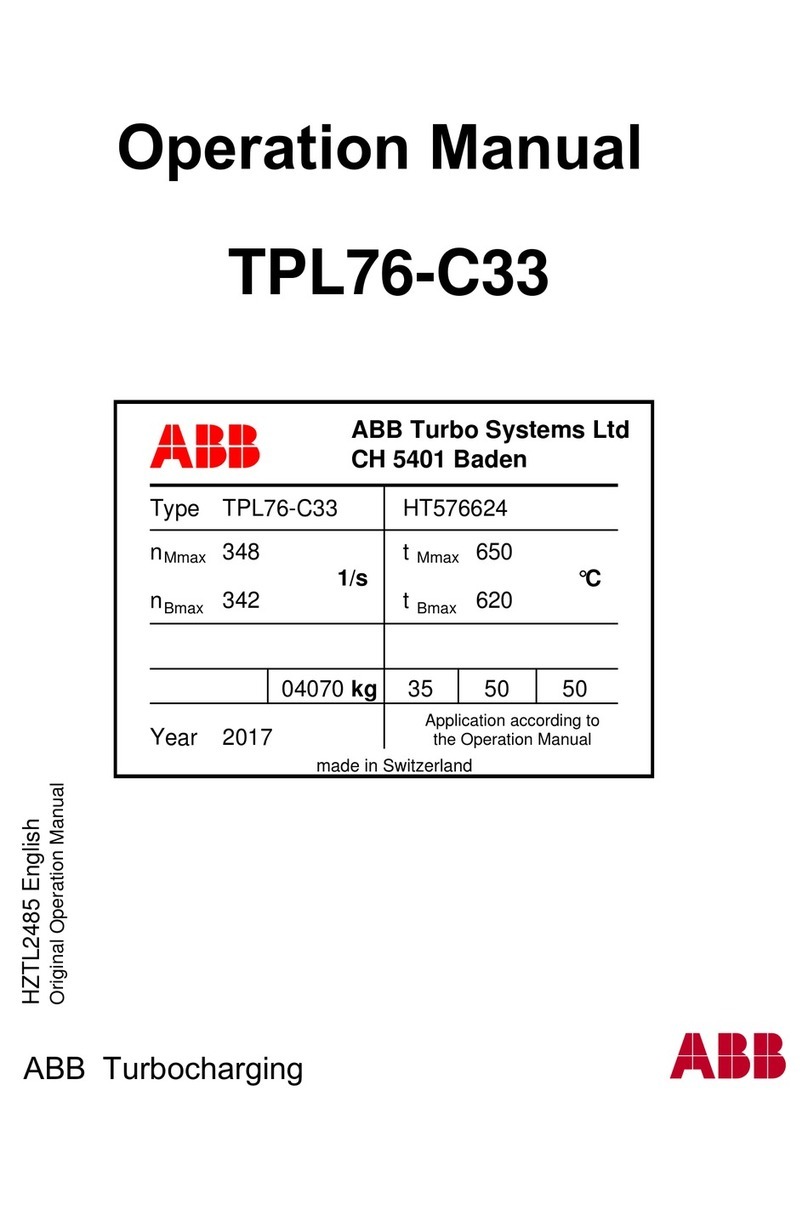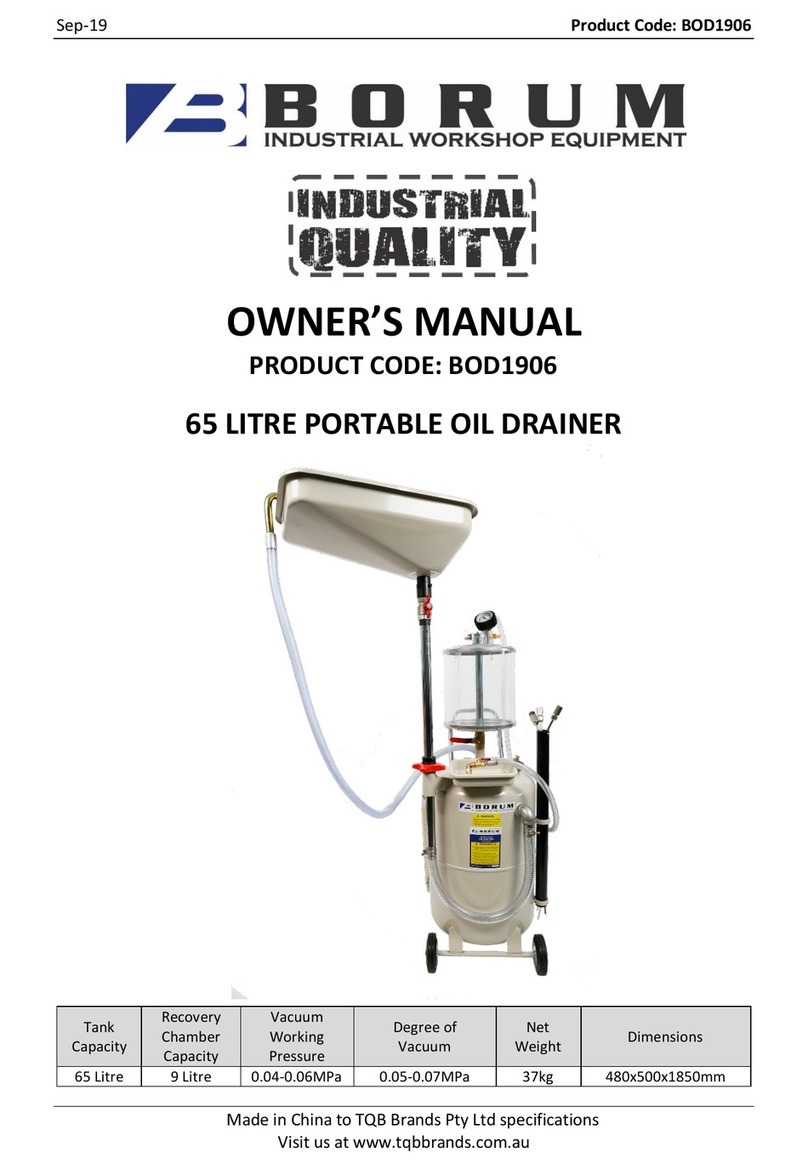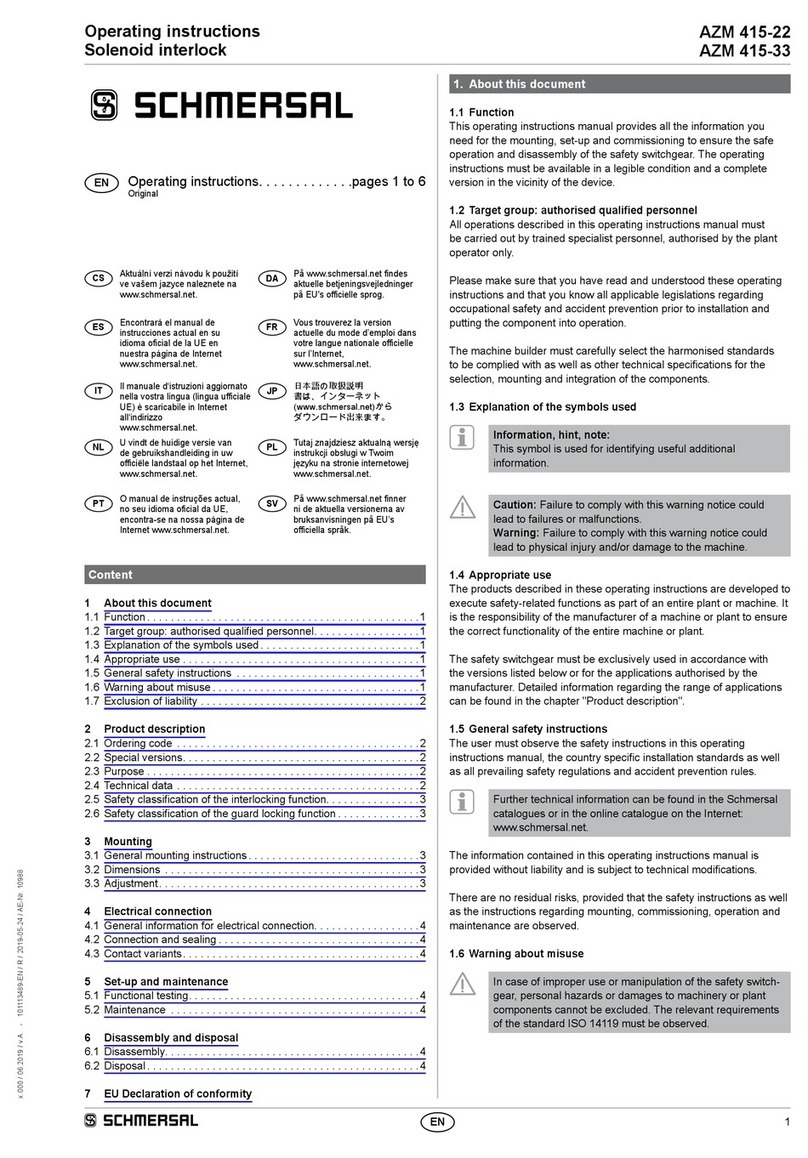Geyer Fill-Master 5000 User manual


1
Packaging Enterprises Inc.
Filler Machine Division
12N. Penn Ave., Rockledge, PA 19046
Telephone (215) 379-1234: Fax (215) 379-1166
Web site: www.packagingenterprises.com
Parts Email: parts@packagingenterprises.com
Machine Sales Email: fillers@packagingenterprises.com

2
Table of Contents
Table of Contents Page 2
Inspection upon Arrival Page 3
Locating the Machine Page 3
Leveling the Machine Page 3
Assembling the Machine Page 3
Air Connections Page 3
Machine Speed Page 4
Altering the Machine Speed Page 4
Continuous Mode Page 5
Adjustment for Quantity of Fill Page 5
Startup Page 6
Some Important Notes Page 6
Safety Procedures Page 7
Machine Cleaning / Maintenance Page 9
Lubricating Your Machine Page 10
Keep all threaded parts tightened Page 10
How it works Page 11
Fillmaster Air Schematic Page 12
Diagram of Machine Parts Page 13
Fillmaster 5000 machine parts list Page 14 & 15

3
Fillmaster Table Top Filling Machine
A. INSPECTION UPON ARRIVAL
Your GEYER filler has received careful final inspection and has been test run
at the factory prior to shipment. It has been crated securely to insure delivery
without damage or loss of parts. Upon its arrival at your plant, please inspect the
shipment for any damage or loss in transit. If there is any noticeable damage,
please call us at (215) 379-1234. Be sure to keep all packing material (i.e. crate,
braces, and padding) for the first 30 days, in case machine needs to be returned
for repair or exchange.
B. LOCATING THE MACHINE
Your GEYER filler should be set up in a location which will allow enough
space around the machine for the operator and provide easy access for
maintenance purposes.
C. LEVELING THE MACHINE
Make sure that the machine is placed on a level surface.
D. ASSEMBLING THE MACHINE
Generally, after the filler has been tested in our plant, it is shipped to you set
up ready to operate. Remove all tape and other materials used in shipping the
machine. If any Parts are unattached for shipping purposes, follow the
instructions on the attached tags for re-assembly. If you have any questions
please call us for technical assistance.
E. AIR CONNECTIONS
Your machine has been supplied with an air Filter / Regulator, which is
necessary for air operation. You will need to run a line for your air compressor to
the trio unit. There is a dial indicator on the trio unit (directly above the pressure
gauge) for setting the required amount of air pressure (generally 100 psi). The
unit will already be preset from testing at the factory. However, depending upon
varying factors (different products, speeds, etc.) you will have to make
adjustments to this setting. Note: All the air components on the Fillmaster are
self lubricating, No oil is needed.

4
F. MACHINE SPEED
The Fillmaster has been designed to operate on demand. In other words, a fill
cycle is initiated when the operator presses the foot pedal. The machine will go
through and complete one fill cycle and then automatically shut off until the foot
pedal is pressed again. The machine will operate as fast as the operator can get
an empty container under the nozzle and press the foot pedal (filling the
container).
G. ALTERING THE MACHINE SPEED
The Fillmaster has been supplied with two air cylinders. One to drive the
piston (inside the fill cylinder), and one at the bottom of the hopper (next to the fill
cylinder) to operate the valve mechanism. These air cylinders have been
supplied with two flow controls each (one at ether end of the cylinder and on top).
Each flow control has an adjusting screw. By turning the screw with a small
screwdriver you can adjust the speed of the forward stroke (the flow control
closest to the discharge of the machine) and the return stroke (the control
farthest from the discharge) of the air cylinder. Please note that these flow
controls have been preset by the factory for the optimal speed and timing.
However, you may want to make a small adjustment to increase (or decrease)
the overall speed of the fill cycle, or just the speed of the piston intake or
discharge stroke.

5
H. CONTINUOUS MODE
Note: Disregard the following if your machine was supplied with the optional
single cycle / continuous switch.
The machine has been sent to you equipped with a foot pedal. Once the
foot pedal is depressed, the machine will complete one cycle and then shut off,
until the foot pedal is depressed again. If you wish to have the machine cycle
continuously, you can perform the following procedure. First disconnect the air
supply. There are two lines of air tubing coming from the filler to the foot pedal.
About 6 to 12 inches from the foot pedal there are two plastic instant tube fittings.
By pulling back on the end of either one of the plastic connectors in one hand,
and with the tubing in the other hand, the tubing will be released (see illustration
below). (You are in the process of disconnecting the foot pedal from the
machine). On the second tube, remove the tubing with the fitting still attached.
At this point you should have one tube with a fitting and the second one is just
the tube by itself. Connect the open tube into the open end of the fitting on the
other tube (closing the loop). When the air is reconnected the machine will cycle
continuously.
I. ADJUSTMENT FOR QUANTITY OF FILL
The volume of product that this filling machine dispenses depends upon
the size of the inside diameter of the fill cylinder that is supplied with this
machine. (Other sizes can be obtained from our facility, just call 800-453-6213)
And the length of the stroke that the piston takes. The stroke of the piston is
adjustable, thereby allowing the machine to deliver different volumes.

6
I. ADJUSTMENT FOR QUANTITY OF FILL - CONTINUED
Each size cylinder has a particular fill "range". The smaller the diameter of
the cylinder the smaller the range of fill. In general, the best accuracy of fill
achieved when the cylinder has a small diameter and a long piston stroke is
taken. This is why a number of cylinders may be required if you are filling a
variety of container sizes.
To make an adjustment in volume of fill, turn the hand wheel at the end of
the air cylinder. You must first loosen the nut on the end of the threaded rod to
turn the hand wheel. Turning the hand wheel clockwise will decrease the volume
of fill. Turning the hand wheel counterclockwise will increase the volume of fill.
Once the proper piston stroke is found, tighten the nut on the threaded rod to
lock in the stroke and seal the air cylinder itself.
J. STARTUP
Once the air connection has been made, and you have tried dry cycling the
machine to make sure it is functioning, you may now test fill. It will take one or
two cycles to prime the filling head and for product to come out the filling nozzle.
Check the volume of fill and if necessary make adjustments as explained in
paragraph I above.
SOME IMPORTANT NOTES:
1. Keep the O-rings on the piston head as well as the O-ring on the valve
plug well lubricated. We suggest using Sana-Lube #2000 Food Grade
Lubricant Which may be ordered through us. Call Tim at (215)379-1234
2. Use lukewarm water to clean filler. Extremely hot water may cause the
valve rotor to expand.
3. Before filling, make sure all the sanitary clamps are hand tight and all
gaskets are in place.

7
Safety Procedures
Please make sure that all operators use extreme caution when operating,
cleaning, and repairing the filling machine. Make sure that all operators and
maintenance personnel read and understand all warning stickers that have been
placed on your machine. NEVER REMOVE THESE STICKERS!!!
GENERAL SAFETY GUIDELINES:
I. Never operate machine with out all guarding securely in place.
II. Never clean machine with hands while it is in operation. It is
recommended that you turn the machine off while cleaning it.
This is extremely important when cleaning the valve!!
III. Never place hands or fingers around moving parts, especially the valve(s)
and Pallet (rotor). The valve and pallet are the main operating parts
directly beneath the filler's hopper. The pallet is a mechanically operated
cut off device and extreme caution should be exercised while the machine
is in operation.
IV. While cleaning the machine, making adjustments or replacing parts,
please turn the machine off first before performing these operations, and
make sure that it can not be accidentally restarted, by using the Safety
Shutoff Valve.
V. Packaging Enterprises, Inc. has made every effort to provide adequate
guarding to provide you with a safe machine. However, please remember
this is a machine and it has many moving parts. Good judgment and
caution should be exercised at all times when dealing with the machine. It
is the responsibility of the buyer to inspect the filler upon receipt and
inform us if the machine has any missing guards or lacks reasonable
safety protection. It is also the responsibility of the buyer to make sure
that all operators have been adequately trained and understand the above
safety guidelines completely.

8
Machine Cleaning / Maintenance
These Procedures should be performed at least twice a week to keep the machine in top
running order and to maintain cleanliness. (Food Plants must perform this cleaning
procedure once a day, after run is complete, to prevent growth of bacteria.) If there
are any questions on part names in this section, refer to the drawing on page 7 and
photo on page 9.
The following procedure should take no more then 10 minutes, once you become
familiar with it.
Make sure the air compressor is disconnected. (There is an air connector right as the air
comes into the machine. The air will be dumped, and the machine is now completely
inoperable, just like unplugging a blender from the wall. It is not necessary to cycle the
machine, since it can not, the foot pedal can be anywhere as long as it is out of the way.)
1. Next remove the hopper.
2. Then remove the pin in the piston rod clevis connecting it to the pallet crank.
3. Next remove the cylinder from the valve and it push back out of the way.
4. Now you can remove the bolt holding the valve to the machine base.
5. Then to clean the valve rotor (pallet) you must raise the lever on the side of the
pallet crank and push out the valve plug. (Take note of the position of the pallet crank)
6. Go back to the machine and, you should be able to easily pull the cylinder off the
piston.
7. You can now remove the piston head by unscrewing it from the air cylinder rod.
(Nonfood plants may clean the piston in place.)
8. Now clean all the parts, you can use any cleaner. (Soap and water usually works
fine (but you will probably know what works best to clean an dissolve your product, food
plants should use a sanitizer at this time inspect the parts, O-Rings, and seals for
wear. (Replace worn or damaged pieces)
9. Once everything is cleaned you can reassemble the above parts, by following
this procedure.

9
Machine Cleaning / Maintenance –continued
10. Start by screwing the piston on the air cylinder rod. Apply some lubricant on the
piston and just at the Open end of the cylinder (see section "Lubricating Your Machine"
page 11) Slide the cylinder over the piston. (Don’t cover the opening in front or you won't
be able to push it on the because, the air needs to escape)
11. Lubricate the valve rotor(pallet) and valve and then reassemble.
12. Re-attach the valve to the base and tighten the bolt all the way.
13. Now re-connect the cylinder to the cylinder port in the valve.
14. Then insert the pin into the piston rod clevis and the pallet crank. (See reference
in section marked "Keep all Threaded Parts Tightened “page 11)
15. Finally re-install the hopper and re-connect the air compressor. And the machine
is ready to stat filling again
All you should need for this maintenance is a 5/16" wrench. We do offer a complete tool
kit with a large assortment of tools. Contact us for pricing at (215)379-1234

10
Lubricating Your Machine
After cleaning the product contact parts and prior to reassembling the
machine, make sure to apply a small amount of Sana-Lube #2000 or other food
grade lubricant to the piston and valve rotor (Pallet). Make certain to coat the
entire part, but do not over apply it. You can order Sana-Lube #2000 by calling
advisable to apply some Sana-Lube #2000 to the air cylinder rods periodically to
help maintain a smooth operation.
Keep all threaded parts tightened!!
Threaded parts may come loose during every day use. Check them before
each run. Loose parts could cause problems! The piston rod clevis should be
tightened as much as possible onto the air cylinder rod it is connected to. The
piston and alignment coupler should be fully tightened as well. All quick
disconnect clamps must be kept tight. Hand tightened is good enough. Keep all
bolts on the fill valve and air cylinders tight as well (just a couple of turns beyond
hand tightened).

11
How it works!
I. Piston takes an intake stroke drawing product from the hopper through a three
way valve.
II. The valve Rotor (pallet) shifts position, and the piston moves the product from
the cylinder to the filling nozzle and into the container.
III. The valve Rotor (pallet) shifts to to its original position, cutting off the flow of
product.
(Piston full forward)

12

13

14
Fillmaster 5000 filling machine parts list
Item Number
Description
Size
Material
Unit
Diagram - Page 1
1
Three Way Valve
Stainless Steel
1
2
Pallet (Valve Roter)
PET
1
Chrome Plated Pallet
Stainless Steel
1
3
Pallet O-Rings (not visible)
2
4
Pallet Crank
Stainless Steel
1
5
Pallet Crank Pin
Stainless Steel
1
6
Pallet Air Cylinder
Stainless Steel
1
7
Pneumatic Sensor
1/8 "
NPT
2
8
Flow Control
1/8" NPT
2
9
Pallet Air Cylinder Rod End
2
10
Filling Nozzle
1
11
Pallet Air Cylinder Pivot Bracket (2 pieces left and right)
Stainless Steel
1
Set
12
Fill Cylinder
Stainless
Steel
1
13
Fill Piston (not visible)
1
14
Fill Piston O-Rings (not visible)
2
15
Alignment Coupler (not visible)
Stainless Steel
1
16
Main Air Cylinder
2.5" x
10"
1
17
Pneumatic Sensor
3/8" NPT
2
18
Flow Control
3/8" NPT
2
19
Quantity Adjustment Rod
Stainless Steel
1
20
Locking Nut and Sealing Washer
1
Set
21
Quantity Adjustment Hand wheel
1
22
Filter/Regulator with lockout
1
23
Hopper Sanitary Clamp
2"
Stainless Steel
1
24
Hopper Sanitary Clamp Gasket (not visible)
2"
1
25
Cylinder Sanitary Clamp
2"
Stainless Steel
1
26
Cylinder Sanitary Clamp Gasket (not visible)
2"
1
27
Nozzle Sanitary Clamp
1-1/2"
Stainless Steel
1
28
Nozzle Sanitary Clamp Gasket (not visible)
1-1/2"
1
29
Foot Switch
1
Foot Switch Internal Valve (not visible)
1
30
Hopper
Stainless
Steel
1
31
Pallet Locking Lever
Stainless Steel
1
32
Valve Mounting Bolt
Stainless Steel
1
33
Air Cylinder Forward Mounting Block
1
34
Air Cylinder Rear Mounting Block
1
35
Base Plate
1
36
Base Side Guards
Stainless Steel
1
Set
37
Legs
4

15
Prices are available by going to our website www.packagingenterprises.com and
clicking on “Parts and Service”.
Fillmaster 5000 filling machine parts list
Item Number
Description
Size
Material
Unit
40
Pallet Air Valve
1/4" Tube
1
41
Main air valve Air Supply Tube
3/8"
42
Male Tube Fitting
3/8" Tube
3
43
Muffler - Main Air Valve
2
44
Sensor Signal Tube
45
Male Tube fitting - Sensor Line
4
46
Main Air Cylinder Tube
1
47
Tube Tee with Reducer
3/8" to 1/4"
1
48
Multi Tee
1
49
Tube Tee
5/32" Tube
1
50
Main Air Cylinder Mounting Bar
Stainless Steel
2
51
Male Tube fitting
1/4" Tube
3
52
Muffler - Pallet Air Valve
2
53
Pallet Air Cylinder Tube
54
Sensor Pressure Tube
55
Tube Elbow
3/8" Tube
1
Table of contents
Popular Industrial Equipment manuals by other brands

Enerpac
Enerpac CST271 instruction sheet

Gifas-electric
Gifas-electric Campetto M manual
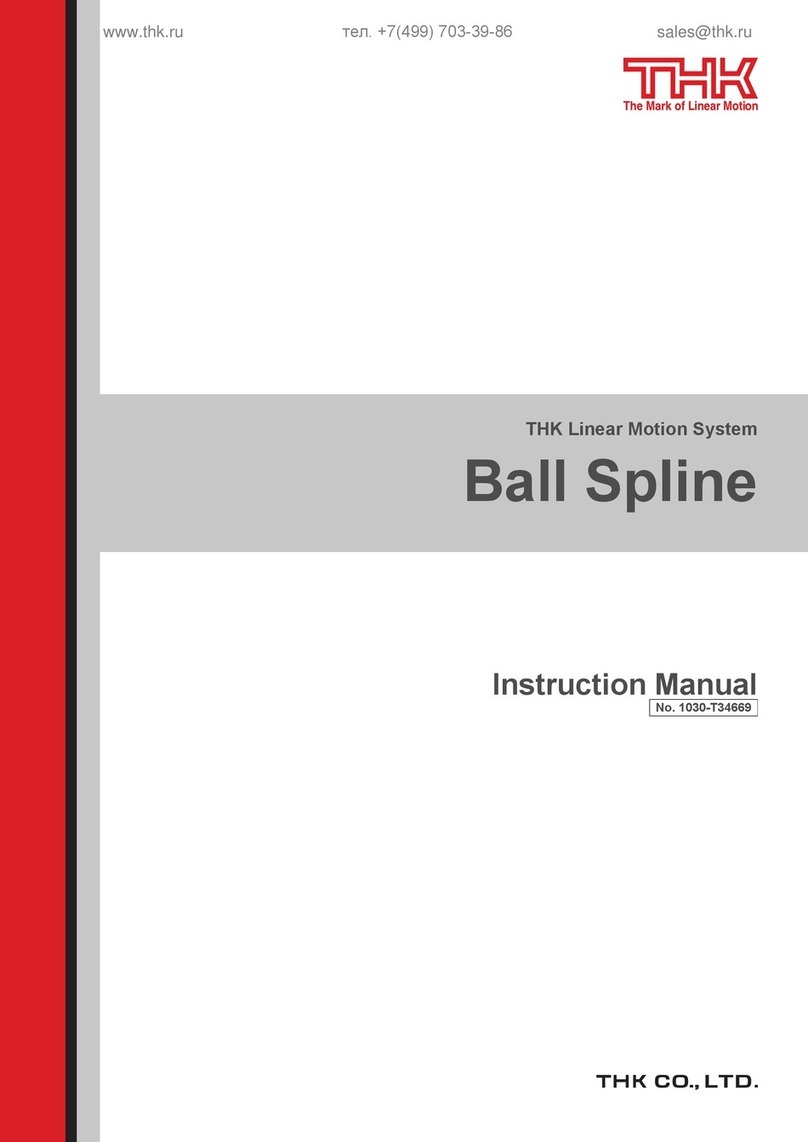
THK
THK Ball Spline instruction manual

Eaton
Eaton Power Xpert Gateway 900 Installation, operation & maintenance manual
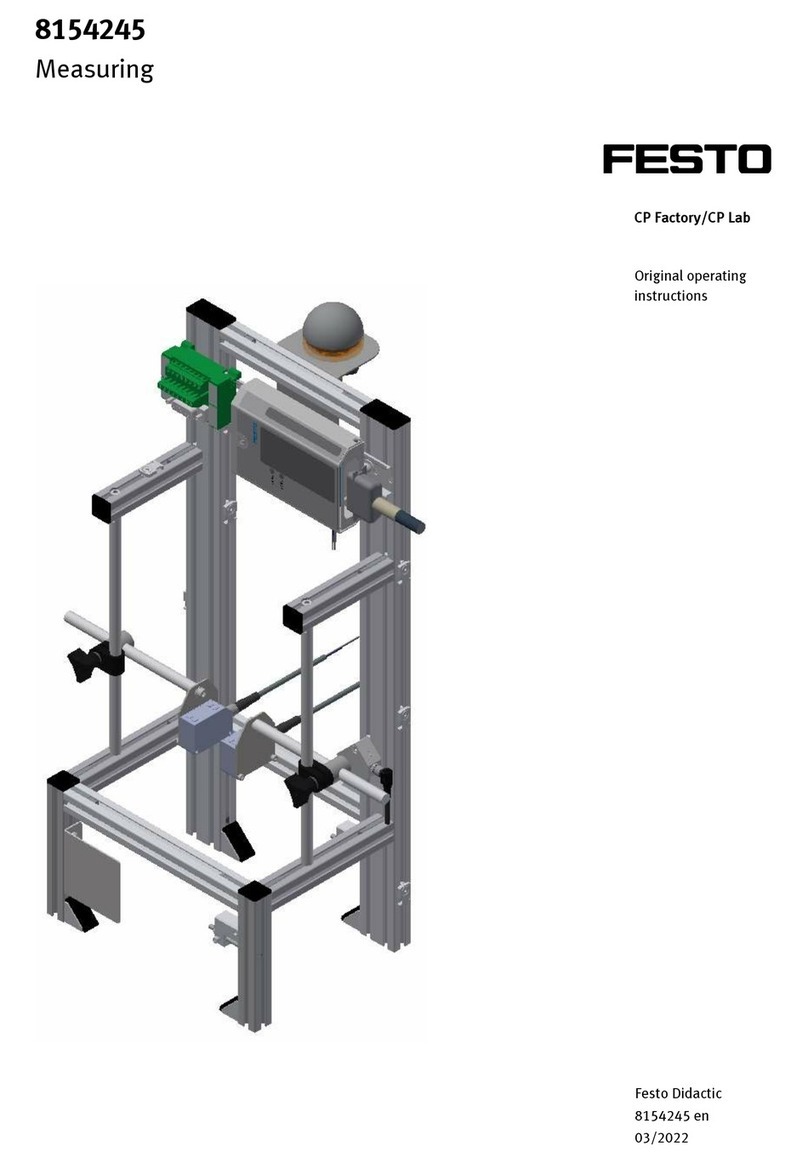
Festo
Festo CP-AM-MEAS Original operating instructions

MiniMax
MiniMax ME 25 Operation & maintenance manual



